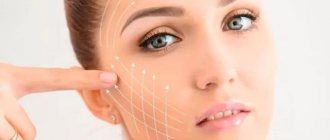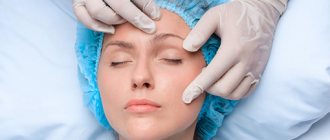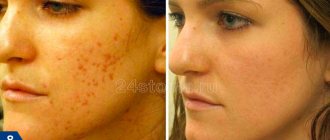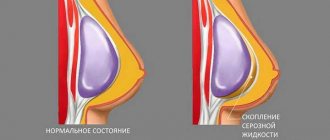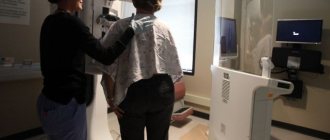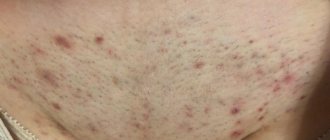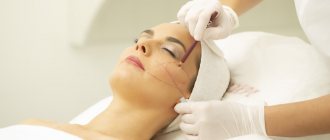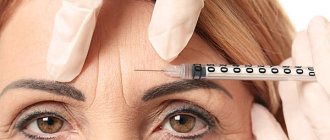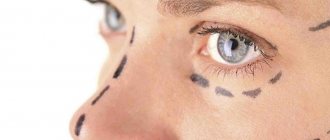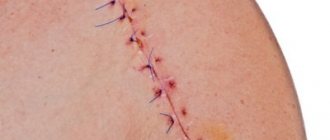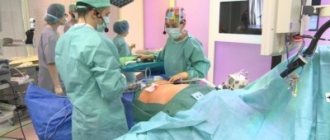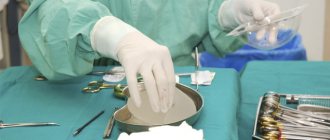Thread lifting, which is becoming more and more popular every year, is primarily chosen due to its short rehabilitation period and minimal side effects. However, as with any, even minimally invasive technique, complications still occur. Which? How to deal with them? Let's find out with Igor Gulyaev, plastic surgeon, Ph.D., trainer in APTOS methods.
Today, a huge number of varieties of threads help us restore beauty and youth: permanent and absorbable, smooth or with a specific fastening system, for tightening soft tissues and reinforcing the skin. All of them, without exception, belong to minimally invasive techniques. And in order to harm a patient with their help, according to Igor Gulyaev, one must “try hard.” However, unpleasant situations still happen. Moreover, in most cases they are the same for different types of threads. First of all, such situations are usually divided into complications and temporary phenomena .
Mesothreads for face lifting - what is it?
Cosmetic mesothreads are special fibers made from polydioxanone, a self-absorbable biomaterial. The threads can be coated with glycolic or polylactic acid, which do not have a negative effect on the human body.
Threadlifting of the face is a very common procedure that has earned recognition not only for its affordable cost, but also for its minimally invasive nature. The introduced mesothreads promote the production of your own elastin and collagen.
The technique allows you to eliminate eyebrow folds, wrinkles on the forehead and around the eyes. Creases in the nasolabial area, corners of the mouth and chin are successfully corrected. By introducing mesothreads, it is possible to sufficiently rejuvenate the surface of the neck, which is the first to show age.
Third month. It's a mess. The thorns came off
19.07.2016
Unexpected deterioration.
The skin sagged, the spines broke off. A possible reason is dragging an 8 kg suitcase to Paveletskaya. Possible, but unlikely. It was on wheels.
I wrote to the doctor. An examination is scheduled for the 21st.
21.07.2016
The doctor was surprised. I have never seen such a thing where the threads “go” after 2 months. The adjustment cannot be made until six months have passed since the procedure. We agreed that she would look for information on this issue, and we would think about what could be done.
I’m getting ready and saving money for a correction in the fall. Something additional will need to be done.
Types of mesothreads
Several types of mesothreads have been developed. Each type differs in structure, density, certain functions, and duration of cosmetic effect. The preferred type of mesothreads is chosen by a cosmetologist depending on the condition of the skin, the volume of the area being corrected, and the desired effect.
We propose to consider the main types of mesothreads that are most often used in cosmetology.
- Spiral (springs)
The name indicates the peculiarity of the structure of the threads. They are a thin spiral that can reliably fix subcutaneous tissue. After the procedure, the spiral fibers straighten and are no longer able to move when moving. Such mechanisms lead to the desired tightening effect. Spiral threads are designed to lift the corners of the mouth for an overall anti-aging effect.
The lifting effect is noticeable after installing the mesothreads, and it intensifies as the material is fixed.
A combination of spiral threads with other types is acceptable. Each fiber is approximately 5-6 cm in length and can be used to eliminate wrinkles in the area between the eyebrows, the nasolabial triangle, and also to correct a double chin.
- Smooth (linear)
The most versatile threads that can be used to correct any areas of facial skin. They are especially often used in the area around the eyes. Fibers can have different lengths and densities.
Smooth mesothreads are capable of forming a dense frame and reinforcing weakened layers of the skin. Under the influence of mesothreads, the synthesis of your own collagen is activated, which promotes skin rejuvenation.
Within 6-9 months, the thread fibers are completely reabsorbed, in place of which their own collagen is produced. Due to new collagen and elastin cells, pronounced lifting is maintained.
Smooth threads have a biorevitalization effect. With their help, all dermal layers are renewed. The expected result depends on the depth of insertion of the threads. If correction is planned, they are implanted in the superficial and deep layers. If it is necessary to increase skin tone, the thread is inserted into the muscular subdermal layer.
- Braids
They are a more complex structure - a weave of several linear monofilaments. Significant thickness provides a more pronounced result that lasts longer. Threads of this type are suitable for correcting thick skin. Often, braids are used to correct the oval of the face, achieving an intense lifting effect.
Woven mesothreads are used to smooth the forehead, chin, and nasolabial triangle. The maximum cosmetic result is possible when administered into the deep, middle layers of the skin, muscle subdermal tissue.
- Mesothreads with notches
An innovative type of thread that appeared relatively recently. They differ from others in the presence of notches - microscopic needles. With the help of mesothreads with notches, the youth of the skin is restored, a clear oval of the face appears, sagging cheeks and a double chin are eliminated.
A long-lasting effect is achieved due to the fact that the notches are tightly fixed in the subcutaneous layers. Re-implantation may be necessary no earlier than after 1-1.5 years.
Prevention of complications
Not all complications of thread rejuvenation methods are related to the design of the thread and the technique of performing the procedure. Thus, the most important risk factor for infectious complications is violation of the rules of asepsis and antisepsis. These rules are regulated by SanPiN 2.1.3.2630-10.
Thread methods of rejuvenation are used at least in a treatment room, with good lighting. Before the procedure, the room is quartzed. When preparing the procedure table, lay out threads, sterile instruments, sterile wipes, and an antiseptic solution on a sterile sheet without touching it with your hands.
When preparing the patient for the procedure, make-up is removed not only from the correction area, but also from adjacent areas. The correction area is treated with skin antiseptics - such as betadine, an alcohol solution of chlorhexidine, AHD 2000. When installing threads in the soft tissues of the face, the procedural field is limited to adhesive bandages in the scalp area to prevent hair from getting into the wound and hair coming into contact with the threads. If there is a thread fixation point in the scalp, the skin area in the puncture area is shaved, and the adjacent areas with hair are treated with betadine, which, in addition to antiseptic properties, has adhesive ability. The doctor performs the procedure in a gown, mask and gloves, which must be sterile.
Other risk factors are also significant, such as the doctor’s insufficient consideration of indications and contraindications for the procedure, the use of low-quality threads, and the patient’s failure to comply with the doctor’s recommendations.
As for taking into account contraindications, it is unacceptable to carry out the procedure in the presence of inflammatory processes (pustular rashes in the form of acne, boils, inflamed scratches, especially from pets) in the area of correction and, importantly, in the immediate adjacent areas. The procedure for implanting threads should also be excluded if the general somatic status of the patient is violated (acute infectious diseases, signs of deterioration in the functioning of the immune system)
The risk of complications is significantly reduced with proper quality control of the threads by the doctor. The doctor must check the presence of a registration certificate from the Ministry of Health of the Russian Federation for a medical device, the expiration date of the threads, the integrity of the packaging, and be aware of the storage conditions of the threads.
Much depends on the course of the rehabilitation period. The doctor gives the patient recommendations that must be followed. After the installation of certain types of threads with high wickability, according to the protocol, prophylactic antibiotics are required. Other recommendations mainly boil down to eliminating mechanical, thermal and chemical effects on the correction area, as well as preventing infection from entering wounds.
Advantages of mesothreads
The use of mesothreads has a number of advantages:
- painlessness of the procedure;
- short recovery period;
- visible result after 2-4 days;
- absence of visible scars, subcutaneous scars;
- achieving a clear anti-aging effect.
The mesothread technique does not impose any special restrictions on the use of other cosmetic techniques: Botox injections, laser lifting, the introduction of special gel-like products to fill interstitial voids, the use of cosmetic products containing oxygen.
The popularity of mesothreads is explained by the achievement of pronounced aesthetic results:
- acquiring a clear oval face;
- elimination of double chin;
- eliminating jowls, tightening the skin of the cheeks;
- smoothing wrinkles in the forehead area;
- getting rid of small facial wrinkles;
- restoration of physiological skin tone;
- healthy, radiant complexion (in particular around the eyes).
Indications
Implantation of mesothreads for face lifting is recommended in a number of cases:
- to eliminate wrinkles on the forehead, between the eyebrows, around the eyes, mouth, etc.;
- for straightening nasolabial folds;
- if necessary, correction of facial asymmetry;
- to restore skin elasticity;
- to improve the color and contour of the face;
- to eliminate age-related ptosis of the upper eyelids;
- for raising eyebrows, drooping corners of lips;
- in order to prevent age-related changes.
The best result is achieved when thread lifting is carried out at the first signs of aging. Depending on the type of threads used, the anti-aging effect can last up to two years. Many cosmetologists recommend mesothreads for people over 40 years old, even in the absence of pronounced age-related changes.
Thread lifting - for cosmetology and plastic surgery
The doctor offered specialists in the field of aesthetic medicine, plastic surgery, cosmetology and dermatology a method that had never existed before. Before the appearance of Aptos threads in the direction of dermatocosmetology, there were injections and many other fairly simple methods to help an already young patient look younger. And plastic surgery - which provided a radical solution for older patients, and at the same time required skin incisions and tissue distribution. Between these areas there were no intermediate methods and transitional procedures for the patient’s transition from dermatocosmetology to surgery without serious surgical and surgical intervention.
It was APTOS that linked these two areas together and gave the world a method of effective non-surgical thread lifting.
The APTOS company gave impetus to the development of aesthetic medicine and laid the foundation for the mass production and use of lifting threads, which gave rise to the spread of threads from other manufacturers.
Contraindications
During the consultation, the cosmetologist asks in detail about the presence of any somatic pathologies. Mesothreads are contraindicated:
- during exacerbation of chronic diseases;
- skin tendency to form keloid scars;
- individual intolerance to monofilament material;
- oncological processes;
- epilepsy;
- diabetes mellitus;
- signs of respiratory viral infections;
- mental disorders;
- dermatological diseases in the area of thread insertion;
- pregnancy;
- breastfeeding;
- autoimmune diseases.
What is the procedure for inserting mesothreads?
It should be said right away that mesothreads should be installed in a cosmetology clinic, with a doctor who knows the intricacies of the technique. A hospital stay is not required; the patient is sent home after the procedure.
Implantation of mesothreads takes place in stages:
- The patient is helped into a comfortable position on the couch.
- Cleanse the face of cosmetics and sebum.
- An anesthetic is applied to the surface of the skin.
- After 20-30 minutes, the skin is treated with an antiseptic solution.
- In the injection area, the skin is slightly tightened to eliminate sagging.
- A special needle with a fixed thread is inserted into the tissue.
- At the established point, pressure is applied to the skin to fix the fiber.
- All mesothreads are installed in the same way.
- Once the material is implanted on one side of the face, the needles are removed.
- The puncture sites are treated with an antiseptic solution.
As a rule, about 50-70 mesothreads are introduced, but no more than 100. The entire operation lasts no more than 30 minutes. If a large amount of material is being injected, such as for a circumferential facelift, it may take about an hour.
Removing threads
There are many scary stories and myths associated with the removal of threads (primarily notches and cones): the threads grow in, when they are removed, the tissues are torn, and pits and scars remain on the face. “In fact,” says Igor Gulyaev, “if necessary, the threads are removed very easily. This is done with a regular tiny hook or an injection needle with a curved tip, using only local anesthesia.
“The thread is most easily removed when inflammation develops,” says our expert. – Firstly, in this case it is clearly visible on an ultrasound. Secondly, the inflamed tissues are much more loose, and the thread can be easily pulled out. But with other types of complications, no tissue rupture occurs. The thread is cut in several places and is always pulled out along the notches, without damaging the tissue at all. If the thread is linear, no more than three punctures are required to remove it, if it is in the form of a loop, a few more.
It is only the removal of threads in the long term that causes some difficulty for doctors, since the thread may already be covered with a dense capsule and is fixed in the tissues much more reliably. But fortunately, this happens extremely rarely.
“Braces using threads are good primarily because they are reversible,” emphasizes Igor Gulyaev. – And this applies not only to the development of complications. Like any technique, thread lifting is subject to a certain fashion. Not so long ago, women liked high Asian cheekbones, which were created using a loop thread. Today this trend has practically disappeared. And in general, ideas about beauty are very subjective, and they may not always coincide between the doctor and the patient.
Even if the procedure is performed correctly and someone simply does not like the result, doctors have about two months to remove the threads and return the patient to his original appearance without any negative consequences.
Features of the rehabilitation period
The recovery period takes up to three weeks. At this time, it is recommended to follow a number of simple rules:
- stick to a liquid, semi-liquid diet, reduce the chewing load on the facial muscles;
- abstain from alcoholic beverages for at least three days;
- do not take medications that reduce blood clotting for at least 3-4 days;
- take an antibiotic prescribed by a doctor for 5-7 days;
- For a week, treat the skin with an antiseptic at least twice a day with light, blotting movements;
- during the first week, refrain from applying cosmetics (including peelings and scrubs);
- sleep on a high pillow in a reclining position;
- avoid overheating and hypothermia;
- do not be in the open sun, do not visit the solarium;
- refrain from physical activity;
- Wearing a compression bandage is recommended.
Following medical recommendations helps to quickly eliminate swelling, subcutaneous hemorrhages, and traces of needle insertion. It may take up to 3 months to completely restore all layers of skin. The maximum cosmetic result is formed 4-6 months after the procedure and lasts for about two years.
Cosmetic procedures are contraindicated during pregnancy and lactation.
Risks
Despite the fact that reinforcement with gold threads is a low-traumatic procedure, for certain reasons various side effects and complications may occur.
Temporary consequences that occur immediately after the manipulation include the following.
Hematomas
During the implantation of the biomaterial, capillaries are injured. This condition is considered normal and goes away on its own after a short period of time. To speed up the healing process, the doctor will recommend the use of special ointments that help speed up blood flow.
Edema
Refers to the natural reactions of the human body to various types of interventions. In different areas of the face, swelling may have varying degrees of severity.
So, with obvious fullness, swelling will be more noticeable. It will take about two weeks for this symptom to disappear on its own. To speed up this process, you can apply compresses to your face, as well as take medications.
Dents and bumps
They usually appear at puncture sites. This effect can also be observed during tension of the thread frame. The cause of unevenness is often uneven thread tension.
If this condition persists for 7 days or more, you need to seek help from a specialist.
Hypercorrection
This is a process in which unnaturally raised eyebrows or prominent cheekbones are observed. According to numerous observations, it was found that this is exactly the result that most cosmetologists are trying to achieve. After about 14 days, the swelling subsides and the face returns to its normal state.
It is also worth paying attention to more serious complications that may arise as a result of the introduction of gold threads under the skin
Allergic reactions
When carrying out reinforcement, an allergy can be to both anesthetic and antiseptic solutions. To stop the further development of such a reaction, antihistamines are required. If anaphylactic shock occurs, you should immediately call an ambulance.
Inflammation and infection
Such complications are considered common. The reason for their development may be the cosmetologist’s dishonest performance of work or the patient’s failure to comply with all instructions during the recovery period.
Antibiotics are prescribed to suppress the infectious process. If a large abscess is observed, the threads are removed immediately.
Violation of facial expressions
This effect most often occurs when the threads are incorrectly positioned. If the violation is persistent, the threads are also removed.
Contouring
This is a condition in which threads appear through the surface of the skin. Such a reaction is possible when they are located close to each other, when introduced to the wrong depth or uneven distribution.
